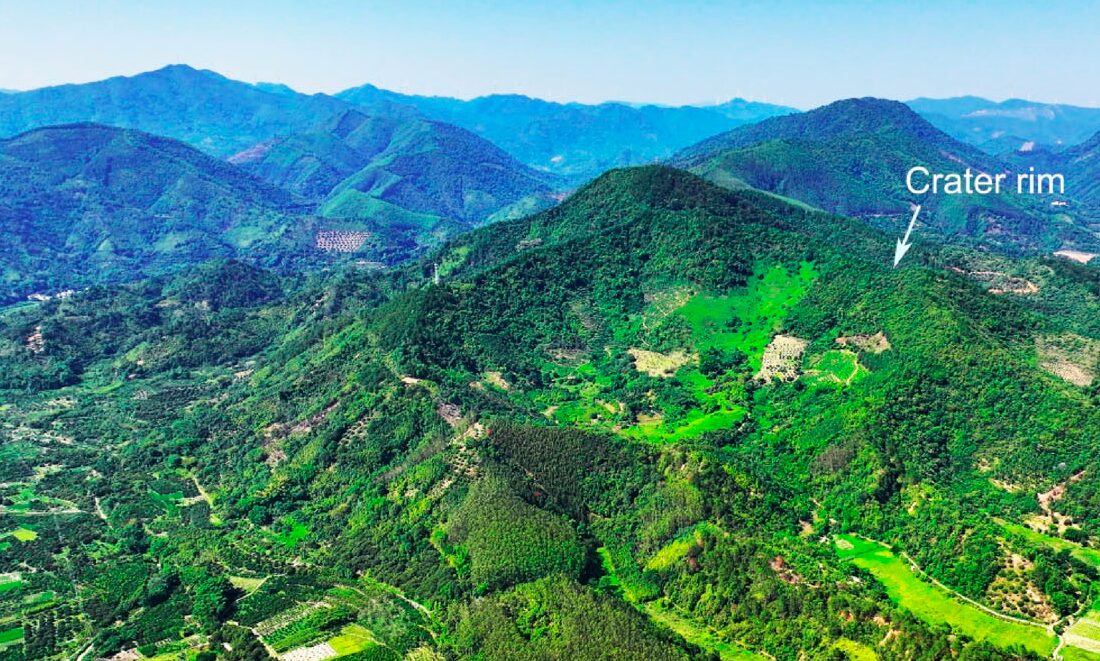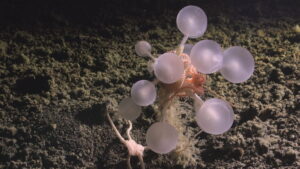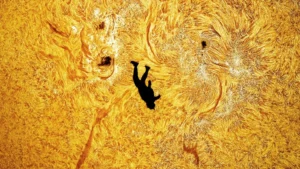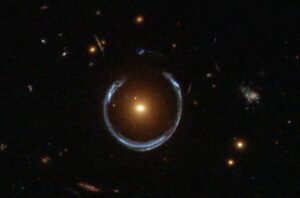Researchers have just discovered a giant crater 900m in diameter in southern China. Named the Jinlin crater, a new study confirms that the huge bowl-shaped formation in Guangdong Province came from an asteroid impact. The impact crater is also less than 10,000 years old, shockingly recent.
To confirm that it is an impact crater, researchers from China’s Center for High Pressure Science sampled rock fragments. A huge object hitting the Earth at high speed brings immense forces to bear. This creates a crater, but it also leaves damage at a microscopic level. The shock waves create what are called “planar deformation features” in materials like quartz and feldspar.
These structures form only under the immense pressure of 10 to 35 gigapascals, which can only come from celestial body impacts.
Researchers collected quartz from Jinlin and looked for these visible pairs of shock-damage structures. They found them.
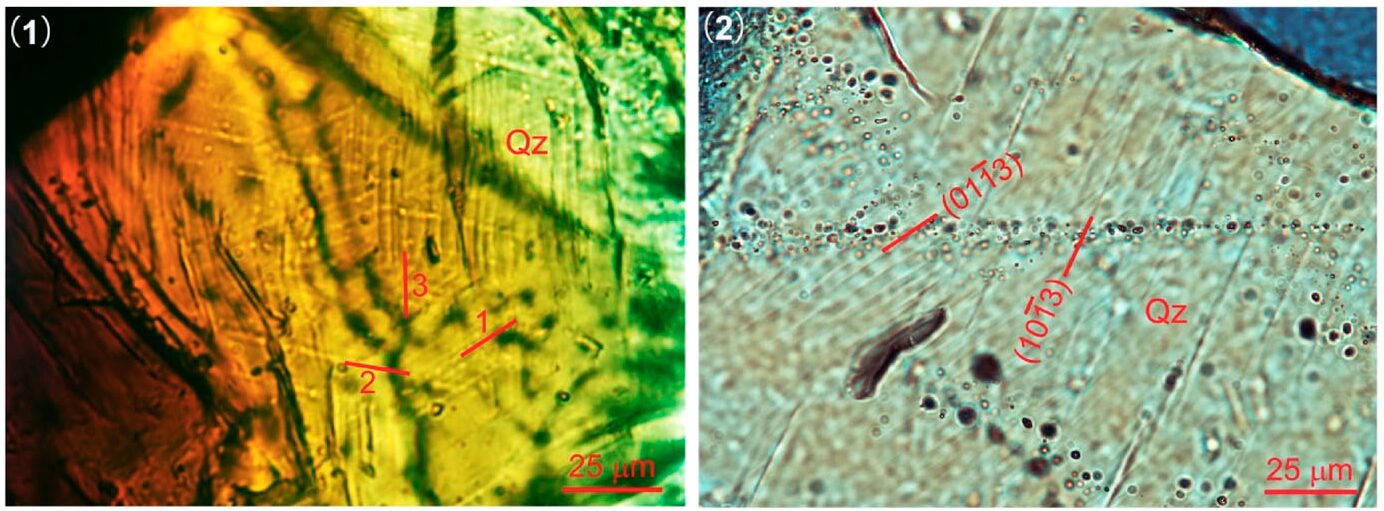
Planar deformation features in quartz from the Jinlin crater. Photo: Ming Chen et al
Hiding in plain sight
But not only is Jinlin an impact crater, but it’s also a very young one. The rainy conditions in Guangdong and the loose soil that make up the rim mean the crater should erode fairly quickly. The fact that it hasn’t means it must be fairly young.
To get a more exact idea, researchers looked at very small pieces of granite. The chemical weathering rate of granite under known local conditions is a fixed rate. Based on that, any fragment of granite under 30 centimeters created by the impact will take around 10,000 years to completely turn into soil. The fact that there are still some of these tiny granite fragments around means the impact occurred less than 10,000 years ago.

The rim is made up of granite fragments and loose soil. Photo: Ming Chen et al
Ancient asteroid
Today, we have very little reason to fear sudden destruction by an asteroid. But significant impact events were something to fear in our recent past. In a press statement, lead author Ming Chen said that Jinlin crater “shows that the scale of impacts of small extraterrestrial objects on the Earth in the Holocene is far greater than previously recorded.”
Based on the size of the crater, Chen’s team estimates that the meteor itself was about 30 meters across. This makes it much, much smaller than the asteroid which killed off the dinosaurs, but thirty times the size of the object which burnt up over the Philippines last year. We don’t know exactly what it was made of yet.
It’s three times the size of Russia’s Macha crater, which previously held the distinction of being the largest Holocene impact site.
While they did not leave any evidence of writing, people were living in the Guangdong region 10,000 years ago. They must have experienced quite a sight.
